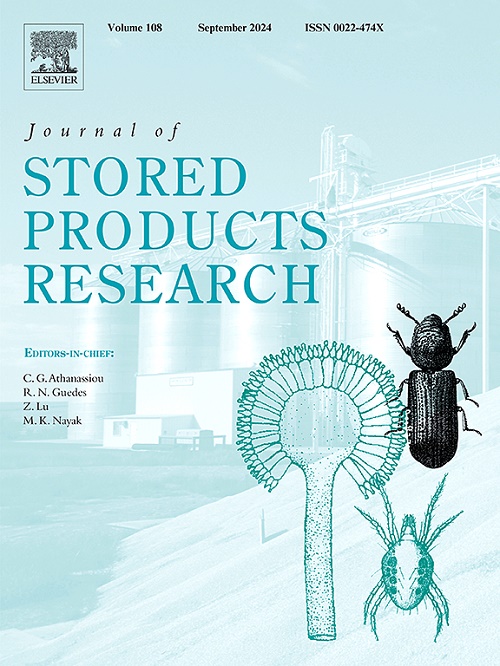New inlet duct arrangements for grain aeration in a small-scale silo: Computational simulation and experimental validation
IF 2.7
2区 农林科学
Q1 ENTOMOLOGY
引用次数: 0
Abstract
The arrangement of air inlet ducts is a crucial factor influencing the temperature distribution within grain storage systems. Poorly designed ducts can result in uneven temperature distribution throughout the grain bulk, leading to localized conditions that promote fungal and insect growth, while also increasing the power consumption of the fan needed for aeration. This study aimed to evaluate the temperature distribution within bulk rough rice during aeration, using both numerical simulations and experimental methods, for three innovative inlet air duct arrangements -E, F, and H-each resembling the respective letter's shape. The study was conducted on a scaled-down model of a one-fourteenth real-size on-farm silo. Temperature data were collected at various locations within the grain bed, and the simulation outcomes were validated by comparing them to the experimental data. The results indicate that, for all three air inlet arrangements, the temperature distribution in both cross-sectional planes (parallel and perpendicular to the airflow direction) was uniform by the end of the aeration process. The time required to reach a temperature of 15.5 °C in both planes was approximately the same, highlighting the effective performance of these arrangements in different orientations. Among the duct arrangements in the experimental silo, the F-duct arrangement demonstrated superior ventilation performance, achieving the target temperature at least %25 faster than the E and H arrangements. The higher efficiency is attributed to its larger volumetric heat transfer coefficient. The H duct arrangement, however, offers other advantages, including a pressure drop that is at least 30% lower and a minimum 17% reduction in power consumption within the storage bed compared to the F and E duct configurations.
The numerical simulations closely aligned with the experimental data. The relative mean error values for volume flow rates of 0.0064, 0.014, and 0.018 m³.s−1 ranged between 2 and 3.53%, 2.77–4.98%, and 2.42–8.52%, respectively. These results confirm the model's accuracy and underscore its potential as a valuable tool for optimizing silo inlet duct designs.
求助全文
约1分钟内获得全文
求助全文
来源期刊
CiteScore
5.70
自引率
18.50%
发文量
112
审稿时长
45 days
期刊介绍:
The Journal of Stored Products Research provides an international medium for the publication of both reviews and original results from laboratory and field studies on the preservation and safety of stored products, notably food stocks, covering storage-related problems from the producer through the supply chain to the consumer. Stored products are characterised by having relatively low moisture content and include raw and semi-processed foods, animal feedstuffs, and a range of other durable items, including materials such as clothing or museum artefacts.

 求助内容:
求助内容: 应助结果提醒方式:
应助结果提醒方式:


